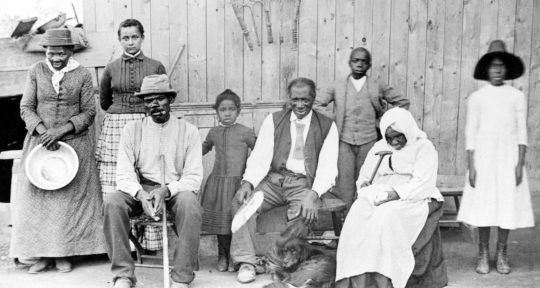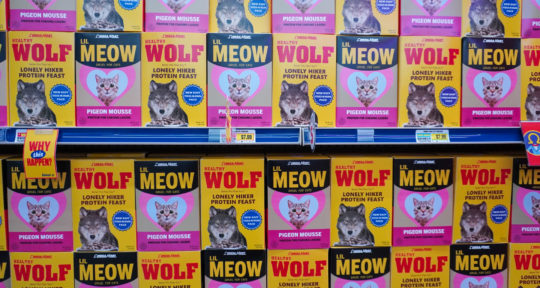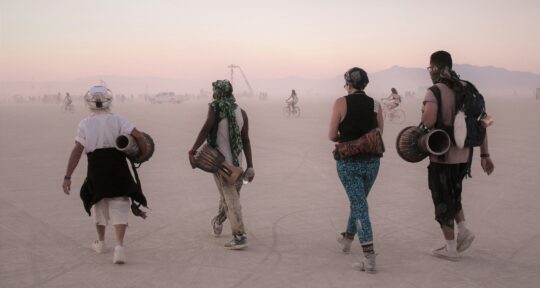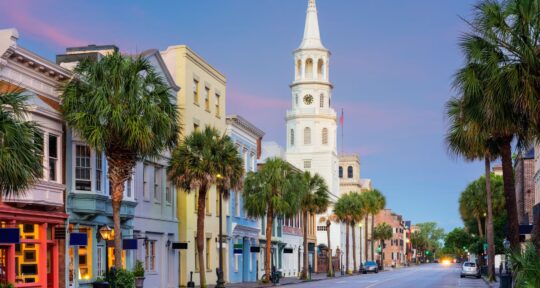When we wake up, we slide our clothes on while lying down, navigating beneath a low ceiling. We step down into the van’s standing space and slide the door open. Our dogs stretch and pee. A couple jogs through the rows of cars in the early morning. Several RVs are parked in the designated section for overnight parking. We have spent the night in the modern capitalist commons: the Walmart parking lot.
In most places and times throughout history, human settlements have designated common spaces. When settlers colonized the U.S., they designed towns around a commons, where—at least in theory—everyone was welcome to gather. People held festivals, small markets, and even executions in these spaces. Today, these “public spaces” have become increasingly privatized and corporate—and that’s where Walmart comes in.
Sam Walton, the mega-chain’s founder, loved traveling in his RV, and made it company policy to allow free overnight parking to RV-type vehicles. My partner John and I live in a van—a whole do-it-yourself remodel of a Ford Transit with a working oven, propane heater, sink, and propane shower. The build was complex: John wired his own electrical system powered by solar energy and a battery commonly used in houseboats. Like many other DIYers, he tends to be frugal. Walmart’s offer of free overnight parking allows us to stop during our long distance drives.
Overnight RV Parking at Walmart
If you’ve seen the 2020 movie Nomadland, you might be familiar with people who live full-time out of their vans or RVs. Frances McDormand stars as Fern, a woman who sells her belongings and decides to live nomadically, traveling across the country for seasonal work. Many of the van dwellers portrayed in the film have been dealt a bad hand of economic hardship and loss. Living in their vehicles has become a way to defy society’s expectations and live life on their own terms. While there are many people who travel like this, most of the vanlifers I socialize with are younger and more privileged—outdoorsy people who aren’t interested in normative career paths. They want to explore lives off the grid and don’t want to be defined by their professions. Most of them maintain more comforts in their vans than Fern because they have the means to do so.
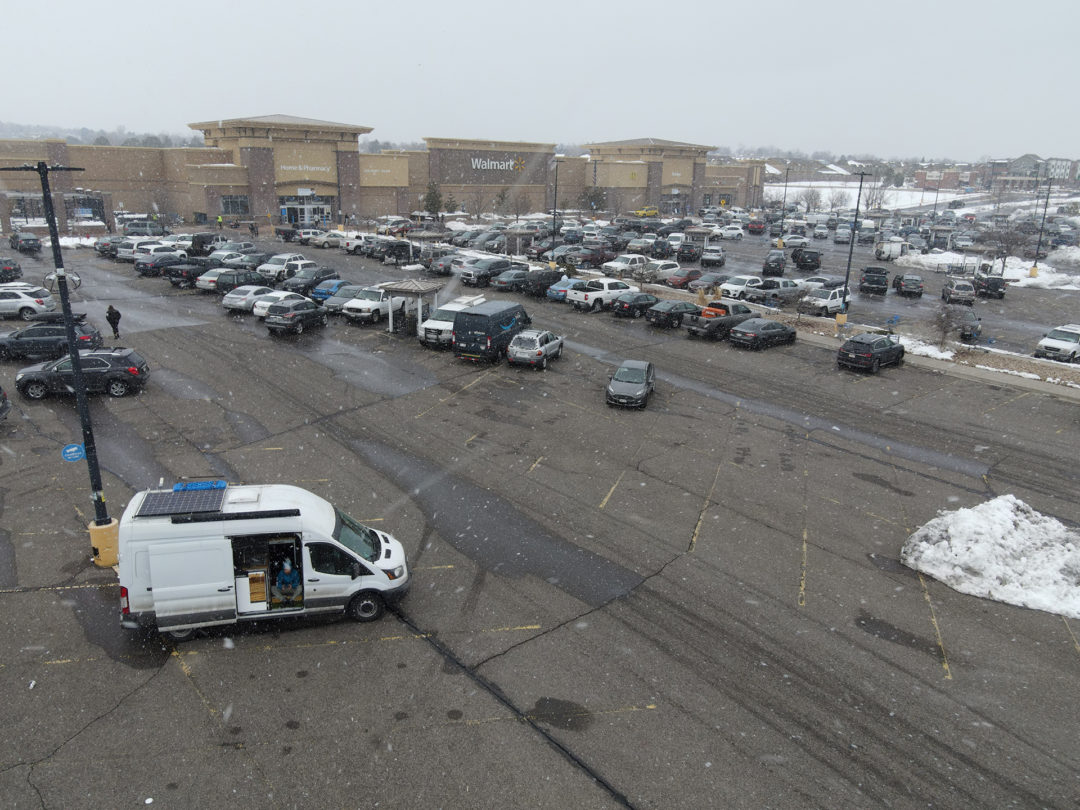
While vanlife is often neither as idyllic as some influencers may boast nor as tragic as Nomadland would attest, vanlifers generally fall into two groups: those who move into vans because they have very little choice (like Fern) and those who move into vans because they want to play in mountains (like John). The groups overlap, but they rarely frequent the same places—with the exception of the Walmart parking lot, a uniquely American commons.
Unlikely communities
When we first moved into the van, John and I resisted staying in Walmart parking lots. We prefered to stay in parks near trailheads so we could run with our dogs in the mornings. Parking lots are full of congestion, concrete, and mulch islands with patches of crabgrass. Sometimes, though, the only close-to-nature options available require payment or advance reservations. And sometimes, the crowdsourced vanlife apps we use to find overnight parking will show Walmart as the highest-rated option around.
The first time we stayed in a Walmart parking lot, it was a rainy night in Kentucky. We drove to a little inlet in the lot where a circle of vans had formed under the orange glow of the overhead lights. We felt immediate relief at the sight of the other vehicles. John was used to being one of the only people of color in any van community. He said he felt some affinity to the conclave when we saw a Black woman behind the wheel of her blue minivan. We parked next to her and she waved.
The green space next to us became a dog park of sorts. In the rain, our neighbor got out of her van with two dogs. She let them pee and smiled at us as she rushed them inside to get out of the rain. Through her back door we saw that her van was set up with a hammock. On the roof were two paint buckets. She started driving to reposition the van, but as we waved at her to warn her about the buckets, she only smiled, pointed to the buckets, and nodded. “Oh,” John said, “They’re for collecting rainwater.” Our neighbor was part of the other group of vanlifers. She didn’t remodel her van with expensive insulation or stacked cabinets. Instead, she lived more like the characters in Nomadland.
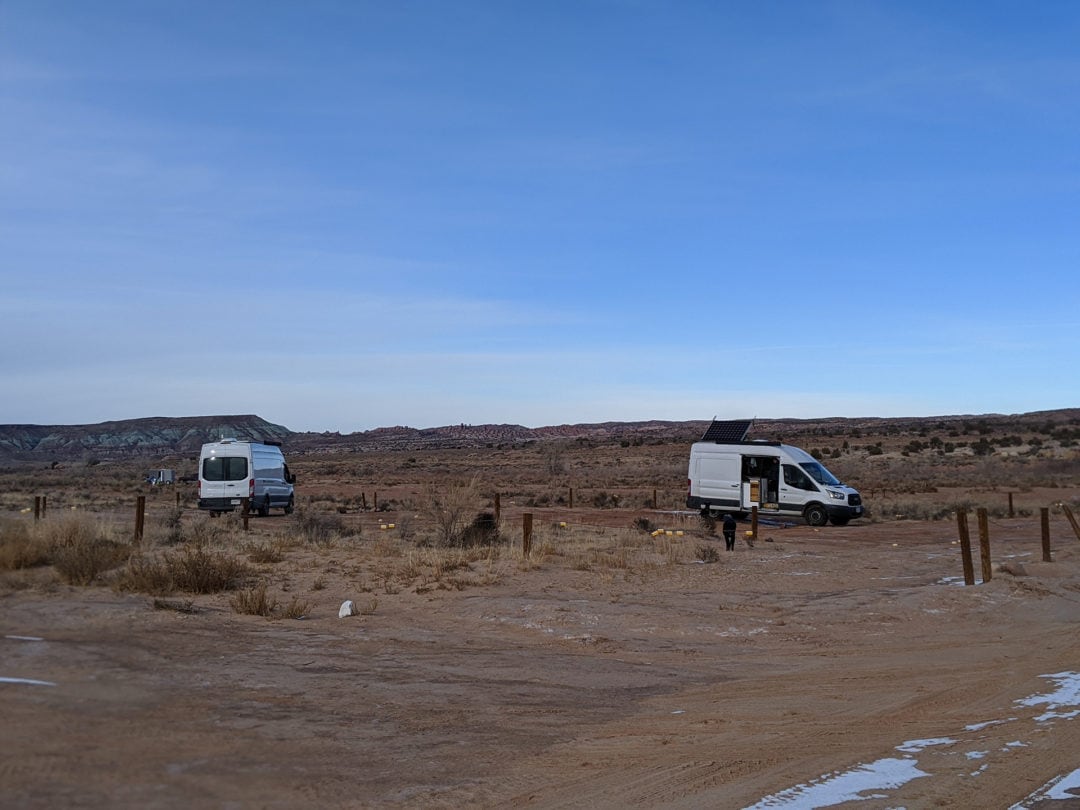
Unlike paid campsites or some national parks, Walmart offers more diversity in its community of overnight parkers, similar to what we found in free campsites on the Bureau of Land Management (BLM) land in Moab, Utah. The Walmart lots are strange oases of common lands, a public green in a privatized space. Against all odds, a mecca of capitalism has become a space of mutual community.
Market lives
Carly, another vanlifer, finds staying in parking lots alienating. “We’ve stayed at Walmarts about 15 to 20 times and try to be as discreet as possible,” she says. Even though overnight parking is allowed at most stores—but not all—the parking lots aren’t perfect for everyone. Carly and her partner can’t let their dogs off-leash. They have dinner inside their van rather than outside at a picnic table. They prefer to stay in places that cater specifically to vanlife, like private campsites, the public lands of the BLM, and park trailheads. She says she’s noticed that moments of community do sneak through when they meet other van dwellers in the lots, but it doesn’t feel the same to her.
Walmart may offer a safe place for vanlifers and RVers, but it’s still a corporation. Carly says that 80 percent of the time she stays in a parking lot, she will also buy something at the Walmart. I find myself doing so, too. It is, after all, a marketplace. Most people don’t spend multiple days here, so there’s little chance for a long-term community to form, but drivers do park in the same place for security. Walmart has clean toilets, a market, and a bit of green space in the islands of the parking lots where nomads congregate and greet each other.
There may be something a bit sad about the common green being reduced to a parking lot—created on the whim of a single businessman—but a tentative community has formed in spite of itself, proving that even in the face of rampant consumerism, the communal spirit of the public commons is still alive.

